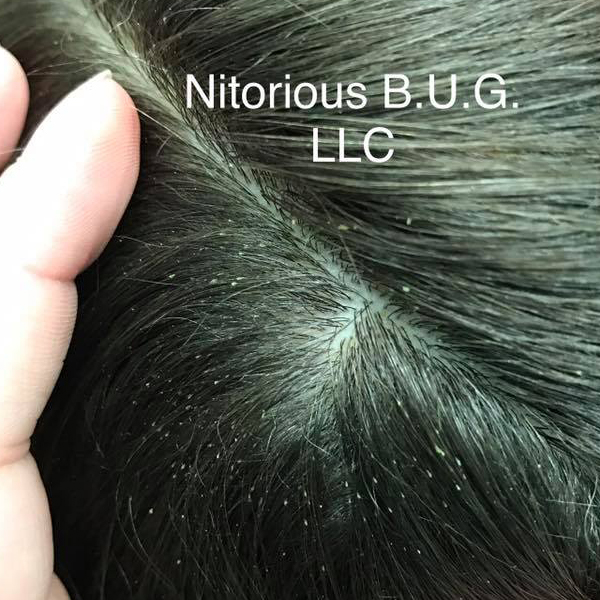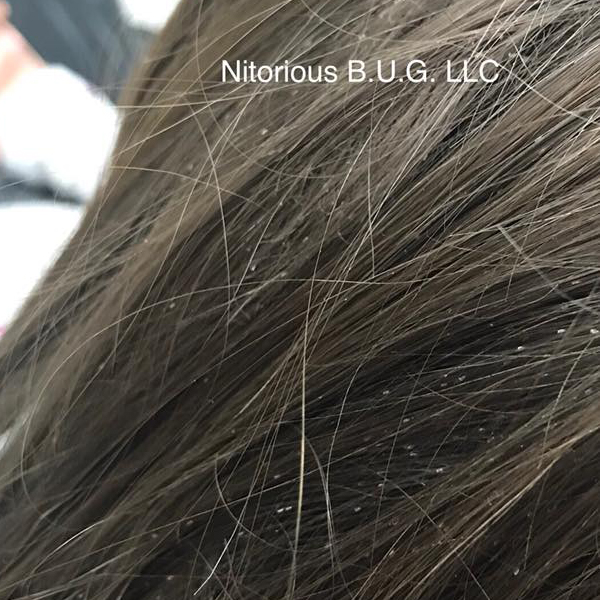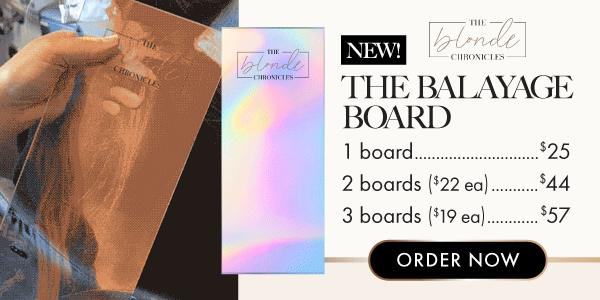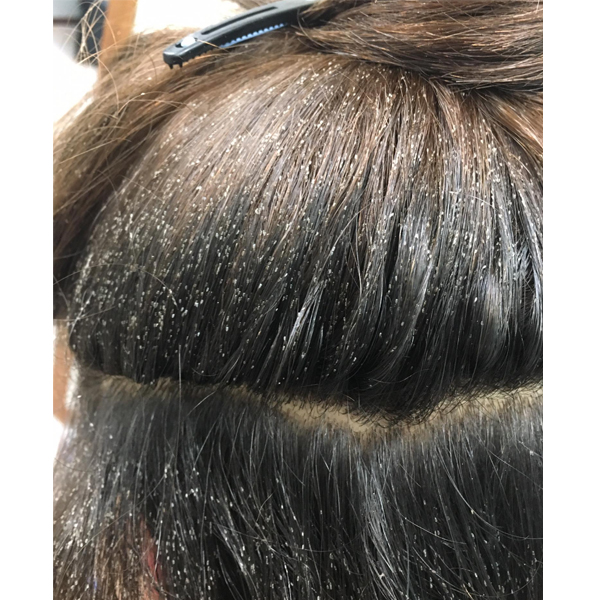Does Your Client Have Lice? This Is What To Do
What To Do When Your Client Has Lice
Is your head feeling a little itchy after seeing that photo? Don’t worry, we have tons of advice on what to do when you discover lice behind the chair—keep reading!
An anonymous BTC reader slid into our DMs to ask us this:
“My staff asked me how exactly do we deal with lice? If a child came in with a parent and we discovered lice…what would we say to the parent? Can we say the child has lice and needs to be treated? Please help, I have been searching online for answers so I can put a packet together explaining step-by-step how to handle the subject but have had no luck.”
No worries, fam! We’ve got what you need.
Keep up with 2022’s biggest trends, hottest pro-education and exclusive industry insight on business advice and best practices. Get your BTC-U Membership TODAY!
How To Identify Lice
Stylists sometimes misidentify lice (dandruff and oil buildup are commonly mistaken for lice), according to Monica Veley, CEO of Nitorious B.U.G. LLC and a stylist in Green Bay, Wis. Here are the characteristics you should look for:
- They’re always teardrop-shaped.
- They always sit on one side of the hair strand.
- They are always uniform in shape and size (this means every particle in the hair will look pretty much the same, whereas with dandruff, the particles will be different shapes and sizes).
- They are not always milky white—they can range in color from almost clear to almost black.
- They must be pried off the hair strand—they don’t easily slide or pull off.
A real-life story about lice misidentification from BTC Facebook Fan Michelle Shipp:
“I was horrified one day when I took my young son to the hairdresser. She declared very loudly that my son had lice and ‘eww,’ she couldn’t continue. I’m a hairdresser myself so I checked him as soon as we went outside. I came back in with my son to speak to the manager to show him the sand that was in his hair from school—no lice. The hairdresser was spoken to about her loud unprofessional behavior—not to mention being misdiagnosed and the embarrassment she caused. I never saw her in there again. So make sure it’s actual lice and eggs not flaky skin or sand and don’t make a scene.”

How Are Lice Spread?
“In almost all cases, lice are transmitted from one human host to another, brought about mainly as a result of head-to-head contact. Head lice require a human host and cannot jump nor fly from person to person,” according to Nitorious B.U.G.
Can lice be spread via brushes or combs? The Centers for Disease Control and Prevention says this: “Spread by contact with clothing (such as hats, scarves, coats) or other personal items (such as combs, brushes, or towels) used by an infested person is uncommon.”
What else should you know about lice? Here’s what @beauty_by_laia said on our Instagram: “I feel that many hairstylists need education on what lice are and how they function. So many are lacking the knowledge of proper lice protocol. i.e. 1) Lice DO NOT jump, they need direct contact with you to spread to another person. 2) Having lice does not mean you are dirty, in fact, lice love and prefer clean hair and scalp! 3) Lice affect humans only. Not your dog or cat.”
State Board Regulations And Lice
Check your state board for what you are permitted to do (and not do) when it comes to lice. Many regulations say that a licensed cosmetologist cannot serve a client with a communicable disease (which is lice). But not always! “In the state of Idaho you have to finish a service if you have started applying color, or cutting it,” @kayyyhew said on Instagram.
Also, check regulations for the language you should use when explaining lice to a client. Without being a medical professional, you probably can’t “diagnose” lice. You CAN typically say you “suspect” lice and recommend your client sees a doctor who can offer a diagnosis. “You can say that you THINK it’s lice and that a doctor could say for sure, but there are treatments at the local pharmacy to fix the issue,” @kayyyhew adds.

What To Do When You Suspect A Client Has Lice
The BTC community weighed in on how they handle a lice discovery:
“I ALWAYS comb the hair out and section it out in the main areas where they’re found (hot spots: behind ears, forehead, occipital and nape). While I do so, I listen to how the parent wants their child’s hair cut BEFORE I even go wash it, especially if they want to go dramatically short—that’s always a red flag. If the child does have lice, I simply tell the parent that I’m sorry, but legally and for the safety of others, I cannot proceed, then inform them on how to treat it and what to do at home to prevent it from happening again.” – @monica.the_hairapist
“I tell them that when the lice have been successfully treated, I will do a free haircut for them. I have lost a couple of clients after finding lice, because the parent is too embarrassed to come back in the salon. But I really to try to make them feel at ease, and to know that I am not judging them, because lice can happen to anyone.” – Marsha Cordry
“I bring parents to the chair and show them and I simply say…This is more common than you know. You can purchase lice removal treatment at any drug store or grocery. You need to get all the nits out after you treat the hair. I recommend using the comb provided in the kit and have a small bowl of alcohol to the side. Clean off the comb in the bowl after every time you comb. It’s a long process but you’ll see all the nits in the bowl. You might need to treat two or three times, each time a week apart. My daughter has had it so I understand how frustrating this can be. Treat the bed and pillows as well as any furniture they use consistently.” – Amber Kelsay Larsen
“Find a local lice removal salon. Hand [the client] one of their cards and quietly tell them to take them there and that you recommend it. I find that when you tell people other people’s stories of having lice, it makes them feel like they’re not alone or they’re not the only person it happened to. People don’t want to feel singled out like they had this individual gross problem that only happen to them. Tell the parent that kids get it all the time, not a big deal girlfriend, take her here and then when you’re sure she doesn’t have them anymore, bring her back.” – @tamrachelle
“Not a stylist, but when I was in grade school this happened to me. Please be very cautious of your tone and facial expression when telling them. The stylist that told my mom sounded disgusted and instead of saying it was policy not to complete a visit, she just refused to do it. I left there crying and to this day, I’m terrified of lice and get anxious before my haircuts from that experience.” – @kirstietackett
“Reschedule so they feel like you truly want to see them again and they don’t get embarrassed.” – @roaming_beauty
“This is my foolproof approach and I’ve never had a negative reaction to it,” says @beautyby_jmichelle:
- “First I make the child comfortable and let them know I’m stepping away to talk to mom/dad.
- I bring the parent to the most secluded place and tell them I have found what I believe to be head lice or nits.
- I let them know what our state board standard for care is and why I cannot complete the service.
- I give them the name and instructions on the best product to use to get rid of it.
- I also let them know that this is very common and I would be happy to check again after treatment to see if another treatment is necessary.
- Then we go tell the child that they’re going to come back another day and mom will explain in the car but I can’t wait to see them on the rebooked day.
- I clean up my station and follow procedure so quickly that nobody even knows.”
Code Words To Use Instead Of “Lice”
Uttering the word “lice” in a salon is a surefire way to freak out every client. Check out some of these code words other salons have developed to sound the lice alarm without alerting guests:
- “My favorite term is ‘we found a little hitchhiker.’” – Bronwyn Carse
- “I coach my team to say they need a pink comb. That’s code for lice.” – Anji Martinez
- “When I was in school we would get kids all the time, and quite a few times they had ‘sparkles‘ (what we called lice to not alarm other guests when grabbing an educator).” – @alistarieo
- “At my school, we say they have sprinkles, so no other clients get freaked out.” – @carey.rose_
- “We used to use the code ‘cupcakes.’ So, ‘hey other stylist, we have cupcakes in the back, would you wanna come take a look at them?’ And from there we would take a client to a back chair and inspect and confirm.”– @lt.razorcut







